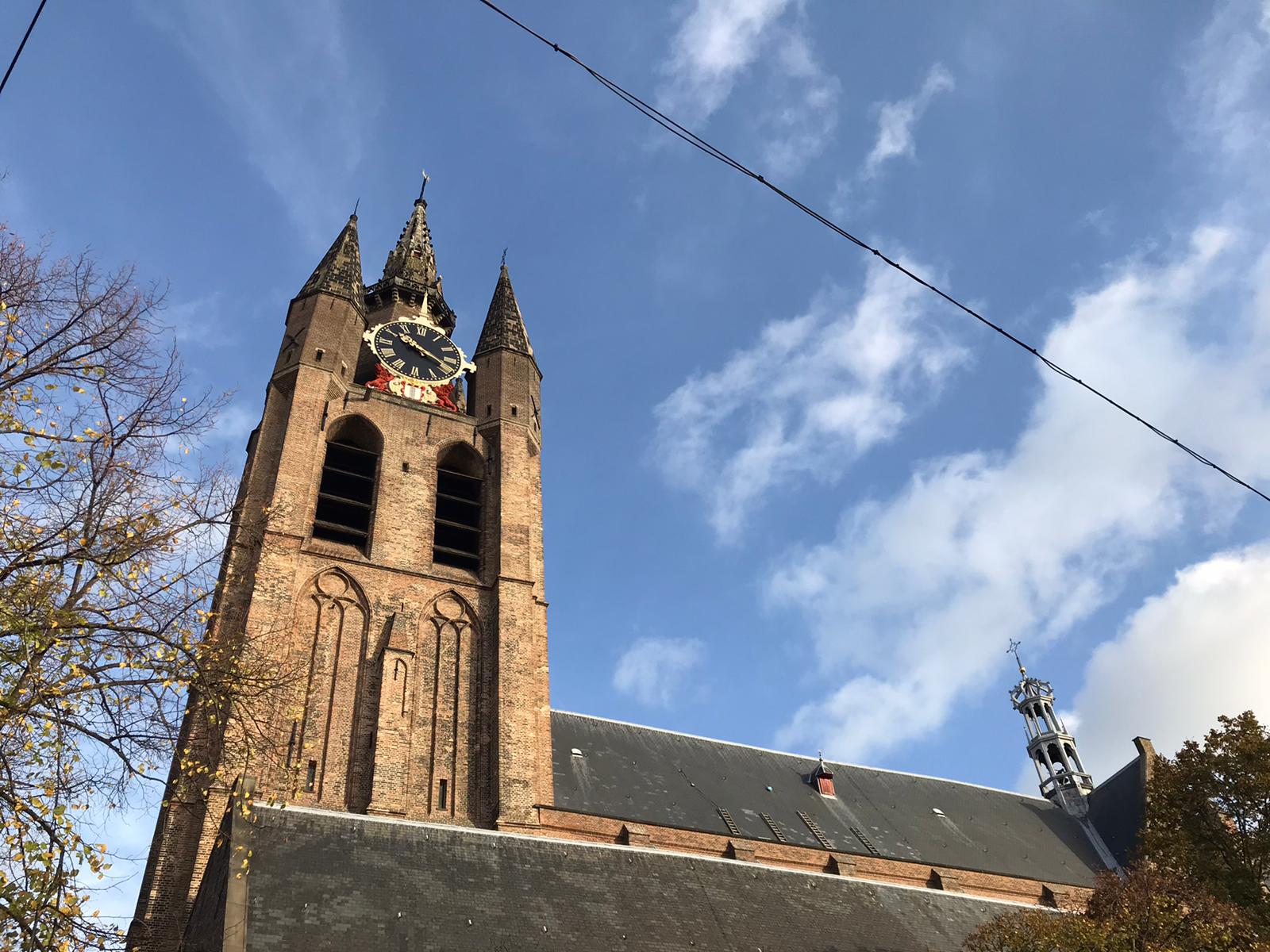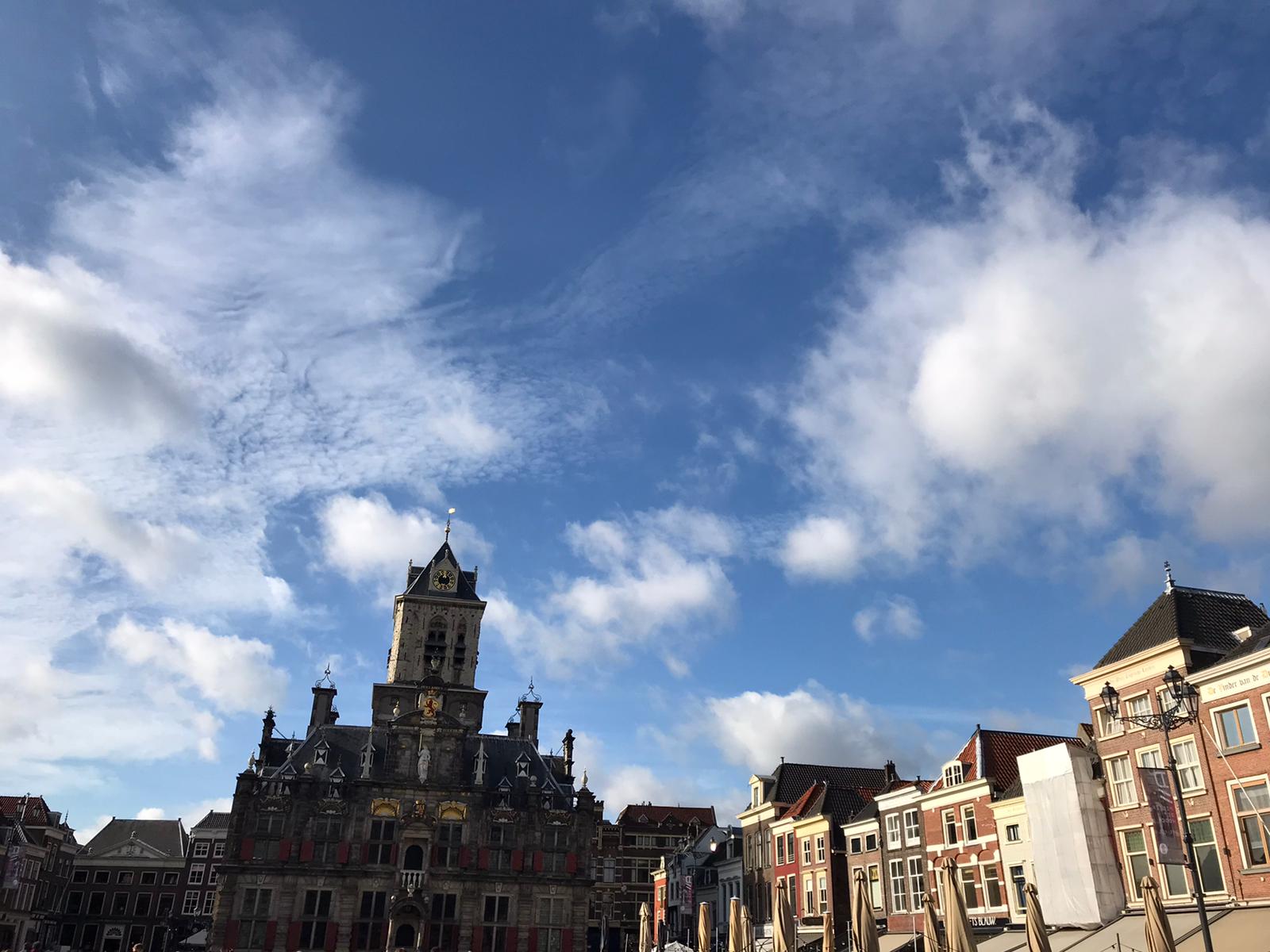All right, let’s talk about the Prinsenhof. This translates as ‘Court of the Prince’. It was built in the Middle Ages originally intended to be a monastery. Later it served as the home of William the Silent, a prominent figure in Dutch Politics. William of Orange, as he is more commonly known, was the “main leader of the Dutch Revolt against the Spanish Habsburgs that set off the Eighty Years’ War (1568–1648) and resulted in the formal independence of the United Provinces in 1581.” (Wikipedia)
Interestingly, William of Orange was murdered in this building. The bullet holes from the murder itself are still visible in a wall near one of the galleries. The museum has deemed it fit to project silhouettes onto the wall of exactly how the murder happened. I found this improper and moribund but I suppose I am not in tune with the more morose elements of Dutch culture.
I must apologise for the picture quality. I had foolishly forgotten to charge my telephone the night before visiting Delft and had to use an iPhone to take the photographs. These were indeed the last days of Sodom.
The above painting is titled “Man Reading a Letter to a Woman”. It is one if Pieter De Hooch’s finest works, completed between 1670-1674. A true highlight of his later works. De Hooch is considered one of the prominent painters of the Dutch Golden Age. His mastery of light depiction inspired countless contemporaries to follow in his stead. Observe for example, in this painting, how the lady to whom the man is reading is the main focus. Not only is she the focus of the man’s attention, she is also the centre piece of the painting. The paintings on the wall and the mantlepiece are out of focus but her and the wonderful velveteen frock shines with deep resplendence. The light from the high window highlights the woman who is staring somewhat incredulously at the reader. I was most impressed by the vivacity of the fabric in her garb but also by the care with which the light falling on the tiles was displayed.
Now that you have read my own musings, what do you think about this piece; “Woman Lacing Her Bodice Beside a Cradle” by the same painter, painted a decade earlier in 1660?
The de Hooch exhibition was most rewarding for me. I learned something about what Louise would term “Good Best Art” and improved myself marginally in the process. I recommend Delft as a city and for its magnificent museum as well as the central square, which can be seen below.





